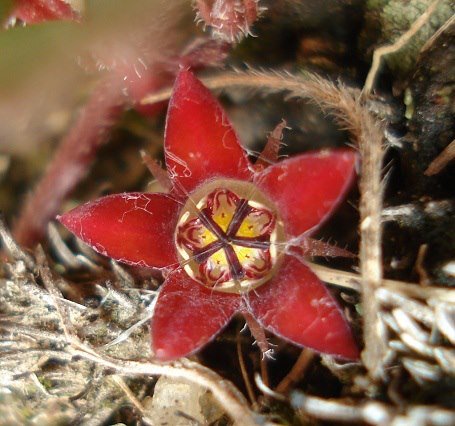Brachystelma swazicum

Author: Ivan Lätti
Photographer: Judd Kirkel Welwitch
Brachystelma swazicum is a perennial growing several prostrate red to purple-red stems from a flattish, disc-shaped, underground tuber. The tuber becomes 5 cm thick.
The simple, opposite leaves are ovate to round on dark red petioles. Their margins are entire and hairy. The leaf surfaces are green to blue green, sometimes tinged red. The midribs and few ascending and incurving lateral veins are prominent and pale yellow in colour.
The star-shaped flowers grow solitary from leaf axils. The calyces have narrow and hairy brown-red lobes. A flower has five spreading, brick-red to blackish maroon corolla lobes that taper in slight curves, nearly triangular to sharp tips.
The plant is found in South Africa only in a small area of Mpumalanga, more of its distribution being in eSwatini. This fact is reflected in the specific name, Swaziland being the earlier name of eSwatini.
The habitat is rocky hills in wooded grassland and bushveld. The habitat population is deemed of least concern early in the twenty first century (Smith, et al, 2017; iNaturalist; www.sntc.org.sz; http://redlist.sanbi.org).

